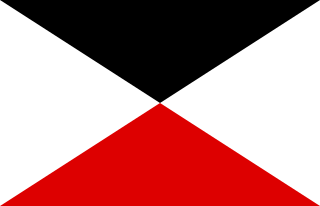The Bavarian Ersatz Division was a Bavarian division of the Imperial German Army in World War I. It was formed in August 1914 and dissolved on 6 October 1918. It was initially a Bavarian formation but soon received several non-Bavarian units which served with the division until 1917.
The 22nd Reserve Division was a unit of the German Army in World War I. The division was formed on the mobilization of the German Army in August 1914. The division was disbanded during the demobilization of the German Army after World War I.

The 10th Ersatz Division was a unit of the German Army in World War I. The division was formed on the mobilization of the German Army in August 1914. The division was disbanded in 1919 during the demobilization of the German Army after World War I.

The 4th Landwehr Division was an infantry division of the Imperial German Army during World War I. It was formed on mobilization of the German Army in August 1914 under the "Higher Landwehr Commander 4". The Landwehr was the third category of the German Army, after the regular Army and the reserves. Thus Landwehr divisions were made up of older soldiers who had passed from the reserves, and were intended primarily for occupation and security duties rather than heavy combat. The division was primarily raised in the Prussian provinces of Upper and Lower Silesia. It was disbanded in 1919 during the demobilization of the German Army after World War I.
The 83rd Infantry Division was a formation of the Imperial German Army in World War I. The division was formed in November 1914 as the "Division Posen 1", part of the Posen Corps, and became the 83rd Infantry Division in June 1915. It was initially formed from the garrison infantry regiments of Fortress Posen. The division was disbanded in 1919 during the demobilization of the German Army after World War I.
The 84th Infantry Division was a formation of the Imperial German Army in World War I. The division was formed in November 1914 as the "Division Posen 2", part of the Posen Corps, and became the 84th Infantry Division in June 1915. It was initially formed from the garrison infantry regiments of Fortress Posen. The division was disbanded in 1919 during the demobilization of the German Army after World War I.
The 85th Landwehr Division was a unit of the Imperial German Army in World War I. The division was formed in November 1914 as the Breugel Division, named after its commander, Generalleutnant Willem Hendrick Clifford Kocq von Breugel, and became the 85th Landwehr Division on 13 September 1915. The division was disbanded in 1919 during the demobilization of the German Army after World War I. The Landwehr was the third category of the German Army, after the regular Army and the reserves. Thus Landwehr divisions were generally made up of older soldiers who had passed from the reserves, and were intended primarily for occupation and security duties rather than heavy combat.
The 87th Infantry Division was a formation of the Imperial German Army in World War I. The division was formed in February 1915 as the provisional Dickhuth Corps, named after its commander, and became the 87th Infantry Division in August 1915. The division was disbanded in 1919 during the demobilization of the German Army after World War I.
The 89th Infantry Division was a formation of the Imperial German Army in World War I. The division was formed in November 1914 as the provisional Westernhagen Division, named after its commander. The nucleus of the unit was troops collected at Posen. It became the 89th Infantry Division in August 1915. The division was disbanded in 1919 during the demobilization of the German Army after World War I.

The XXIII Reserve Corps was a corps level command of the German Army in World War I.

The XXIV Reserve Corps was a corps level command of the German Army in World War I.

The XXVI Reserve Corps was a corps-level command of the German army during World War I.

The XXXVIII Reserve Corps was a corps level command of the German Army in World War I.

The XXXIX Reserve Corps was a corps level command of the German Army in World War I.

The XXXX Reserve Corps was a corps level command of the German Army in World War I.

The XXXXI Reserve Corps was a corps level command of the German Army in World War I.

The X Reserve Corps was a corps level command of the German Army in World War I.

The Guards Reserve Corps was a corps level command of the German Army in World War I.

The XV Royal Bavarian Reserve Corps / XV Bavarian RK was a corps level command of the Royal Bavarian Army, part of the German Army, in World War I.

The XVII Army Corps / XVII AK was a corps level command of the German Army before and during World War I.



